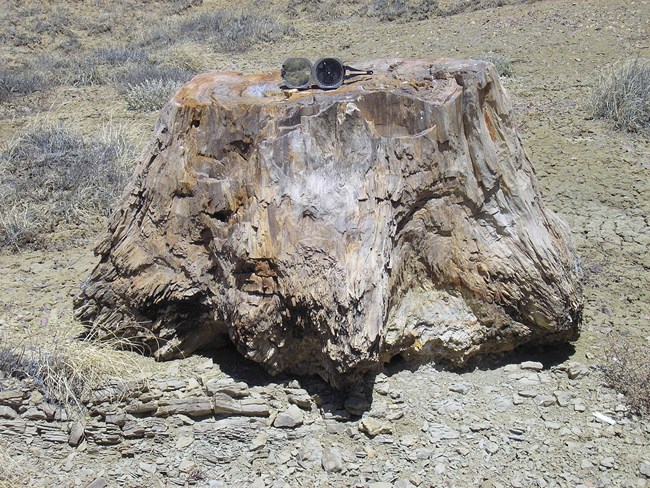Part of a series of articles titled Chaco Collections—Paleontology.
Previous: Shark and Vertebrate Fossils
Next: Inoceramus shells
Article

NPS photo by Jack Wood.
Today, Chaco Canyon’s arid environment doesn’t support many trees, but petrified wood is the most common fossil in the park. During the Late Cretaceous (85-75 million years ago) the regional climate was much warmer, and flowering plant and tree species were flourishing. This subtropical lowland forest supported species similar to today’s conifer, eucalyptus, ebony palm, cypress, and magnolia. Since plants grow in climates suited to their needs, paleobotanists can paint a picture of ancient landscapes by studying fossilized plants and trees.
Footnotes
Scale—This scale bar was used, with several others in the photography to make the 3D photogrammetric model. The circular targets at each end are read by the software. The distance between the two targets is precisely known, and is about 28 cm.
Part of a series of articles titled Chaco Collections—Paleontology.
Previous: Shark and Vertebrate Fossils
Next: Inoceramus shells
Last updated: April 30, 2021